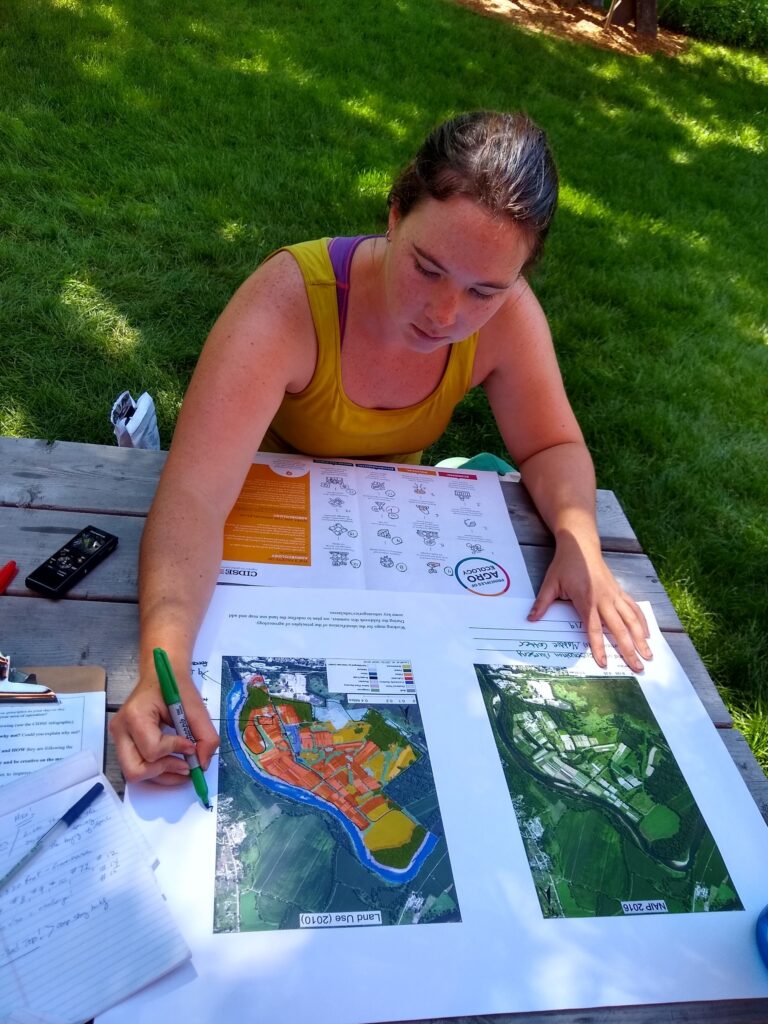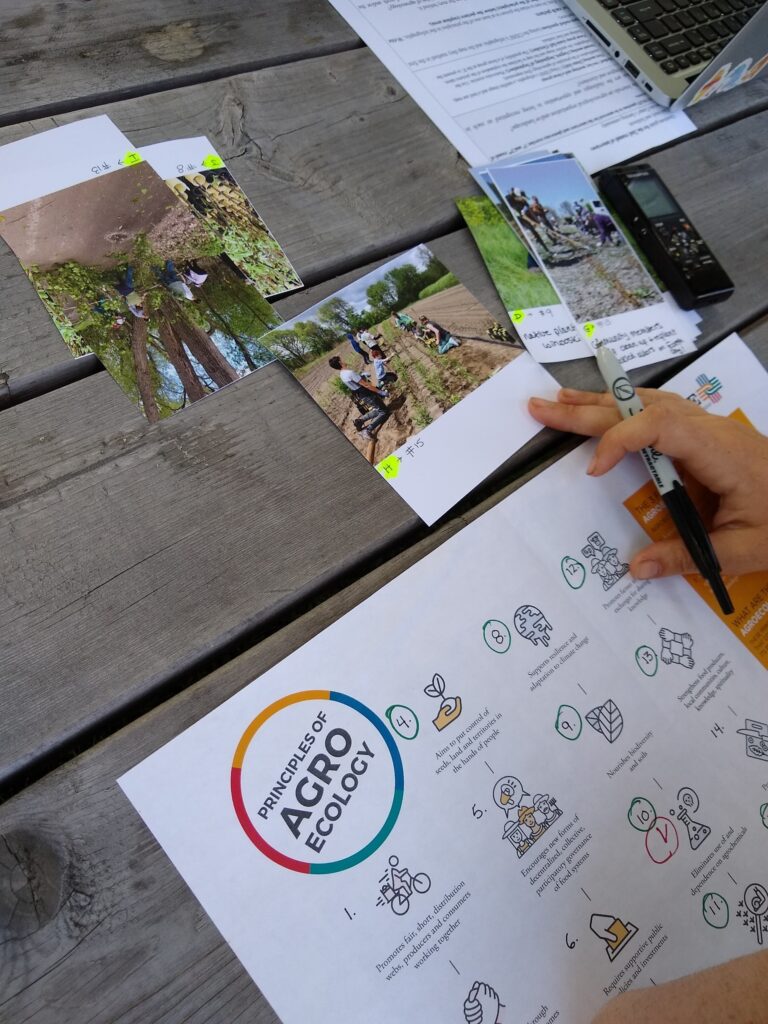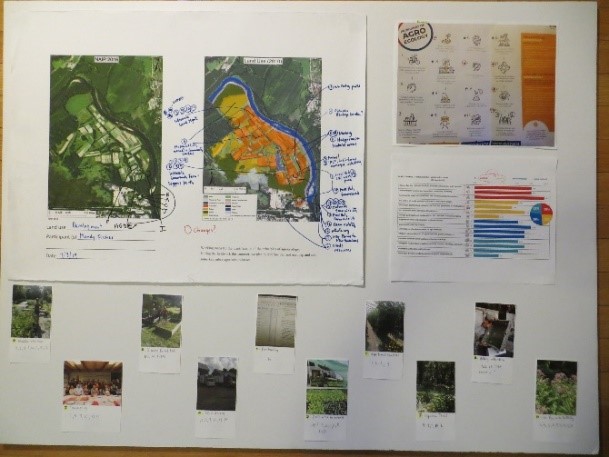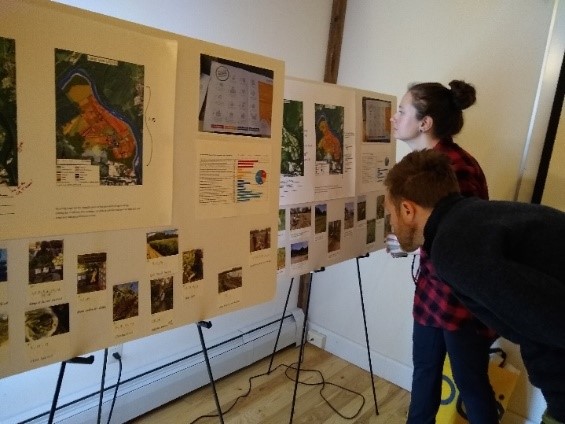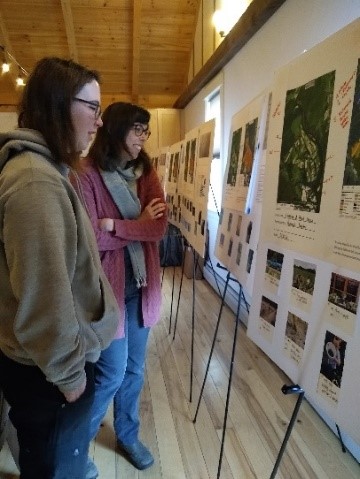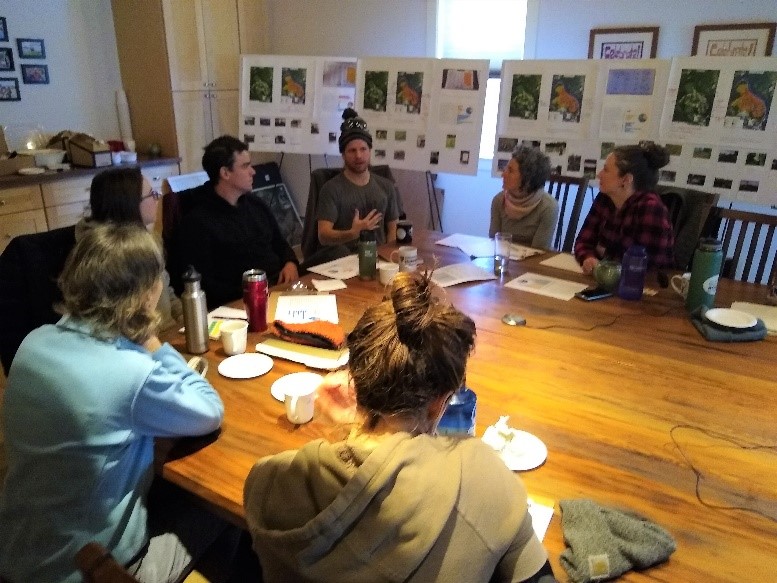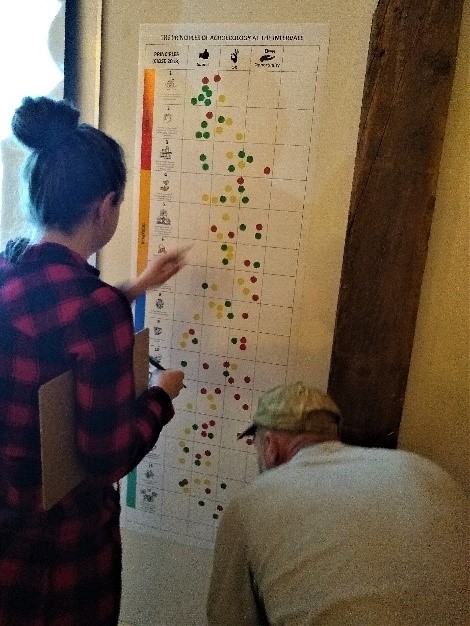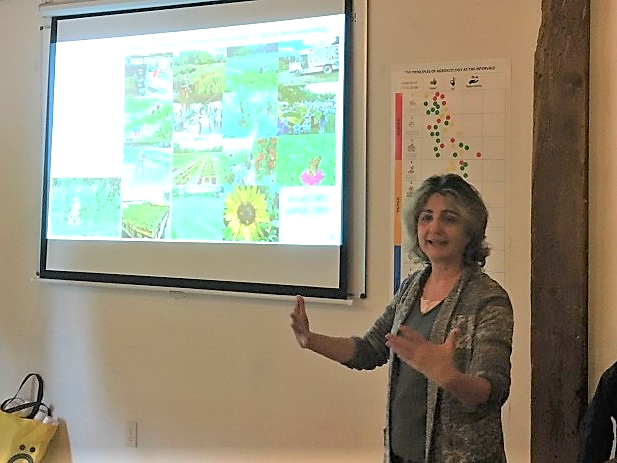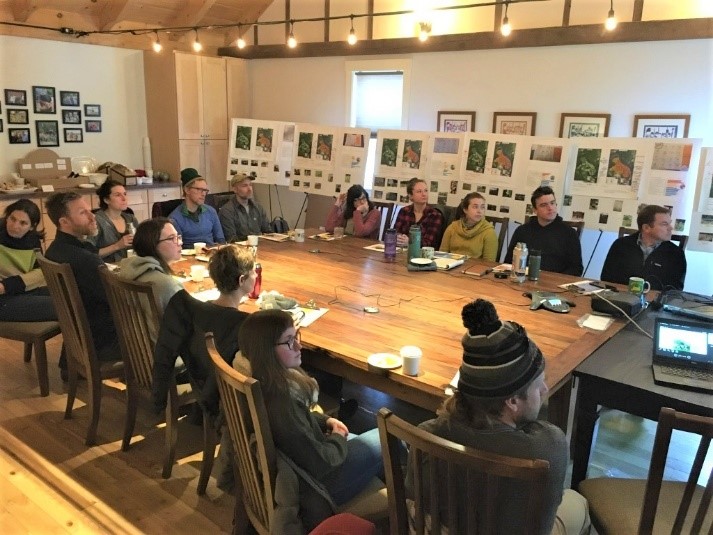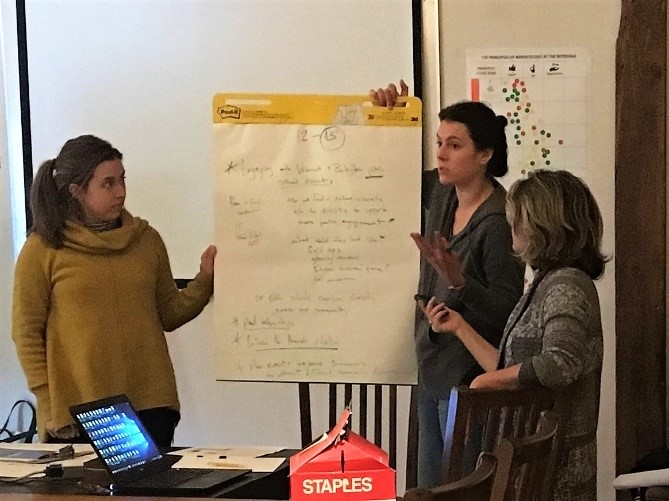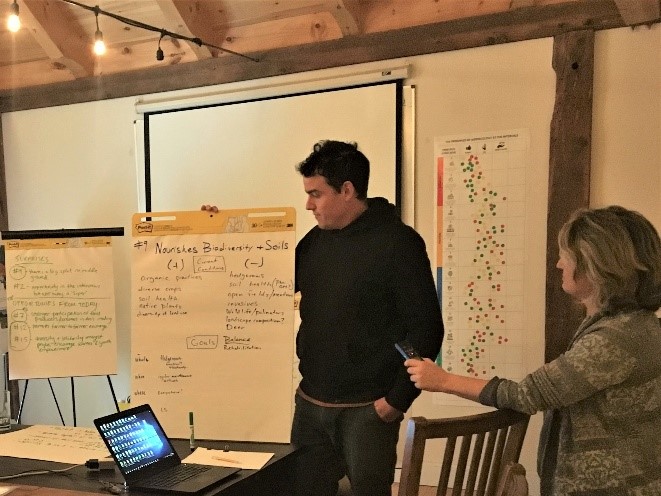Exploring agroecology at the Intervale from a bird’s-eye view
María A. Juncos-Gautier
ALC Research Associate
Doctoral Candidate, York University, Toronto, CA
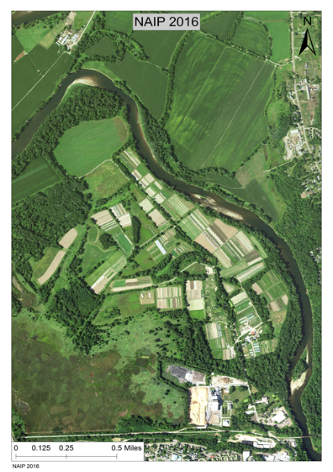
Muhammad Yunus, a Nobel Prize winner, once explained: “In a bird’s eye view you tend to survey everything and decide on a particular point, then you swoop down and pick it up. In a worm’s eye view, you don’t have that advantage of looking at everything.” This was my experience last summer and fall when I had the privilege of facilitating a comprehensive evaluation of the principles of agroecology at the Intervale Center (IC) as part of my doctoral fieldwork. I used multiple surveying methods and followed ALC’s signature Participatory Action Research (PAR) approach to explore with the IC community the presence and implementation of agroecological principles in their daily practices. I was able to attest how a self-evaluation process using PAR and multiple methods encouraged the stakeholders to have a holistic awareness of their organization for positive, targeted actions. As one of the IC team members told me: “It kept me tuned into noticing things in a different way. It was nice to have a reminder of what’s the bigger impact of the things we are doing here, and how can I tie it into the principles.” This was music to my ears. I was helping others see the Intervale in a new light to advance understanding and action toward agroecology.
Engaging in research-reflection-action at the Intervale
The IC is a non-profit in Burlington, Vermont, with the mission of strengthening community food systems. Its 340-acre property along the Winooski River floodplain, about a mile from downtown Burlington, also houses and supports exemplary cases of organic urban/peri-urban agriculture and a food hub for local fresh produce. As Participatory Action Research (PAR) partners, the two main research questions the IC and I want to answer are:
- Is the Intervale an agroecological organization and/or landscape?
- What are the challenges and opportunities for being recognized as such in Burlington and elsewhere?
To answer these questions, the IC agreed to become a case study for a principles-focused evaluation[1] of agroecology. A principle is a “fundamental truth or proposition that serves as the foundation for a system of belief or behavior or for a chain of reasoning.”[2] As an environmental professional I have always enjoyed working with principles because they facilitate an all-encompassing perspective of a situation. Working with principles means working with major leverage points. Any changes in the principles of a system -no matter whether organizational, political, or cultural, for example – could lead to significant shifts in the whole system.[3]
My fieldwork, in a nutshell, consisted of two lines of investigation, one practical and the other theoretical. The practical line was with a sample of thirty stakeholders for one round of interviews, and a subsample of fifteen key players for a second round. Aligning with the IC’s tagline farms, land, and people, the subsample includes farmers, land stewards, and other wonderful people who work at the IC’s multifunctional property in food distribution, gleaning, native flora conservation, reforestation, trails and landscape maintenance, community gardening, administration, business planning, and community-building, among other activities. All the interviews were semi-structured and involved using different surveying methods with visual tools to facilitate insight and discussion (see below): an infographic by CIDSE illustrating a set of fifteen principles of agroecology, maps of the property, and pictures from a photovoice exercise assigned to the subsample for the second round of interviews. The theoretical line of investigation I conducted on my own, as the researcher photo-documenting and taking field notes while engaging in both non-participant and participant (i.e., volunteer work) observation. I wanted to triangulate the practical and the theoretical perspectives and the different surveying methods.
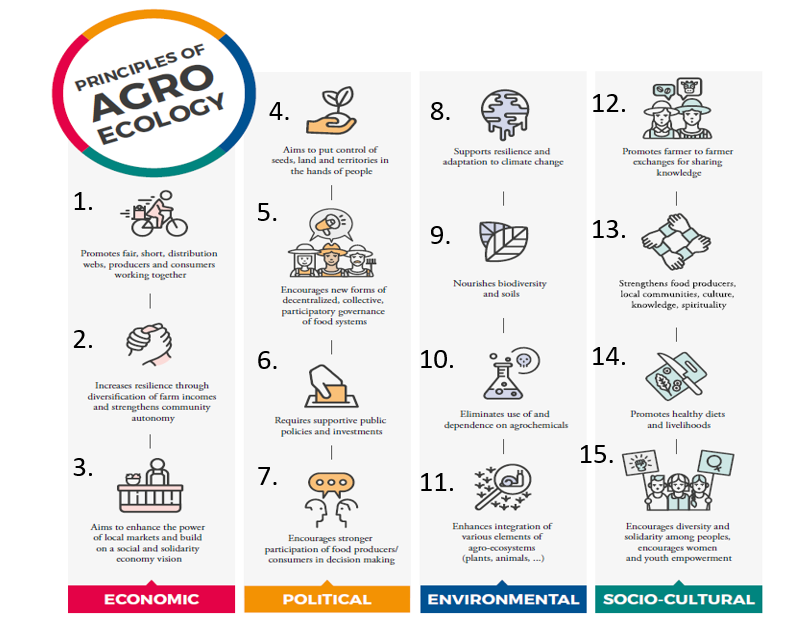
On January 14, I wrapped up my fieldwork with a productive reflection meeting in the IC’s hayloft with the subsample of key actors and the support of the ALC’s leadership team. It was a stimulating experience to see the ALC and IC teams actively engaged in this collective deliberation process. We started with fifteen minutes allocated to browsing through a small exhibit with examples of the visual tools the actors used and marked with their input during the interviews.
The group then divided into smaller discussion groups to reflect on their experience as active participants in the process. They also appraised for the last time the strength of the presence and implementation of each principle at the Intervale on a poster illustrating CIDSE’s principles, and they saw the outcome using a bird’s eye view of the Intervale.
I then presented preliminary quantitative results of my fieldwork, to compare with their results. With minor but important differences to take into consideration, the overall trends in the preliminary results prevailed in the final group appraisal. It was rewarding and reassuring for the group to discover that the different surveying methods and perspectives provided similar results for the principles.
“There is no power for change greater than a community discovering what they care about.” Margaret Wheatley
Before the reflection encounter adjourned, the IC team members each swooped down from the bird’s eye view and picked up three principles they care about and identify as areas of opportunities, and presented recommendations for next action steps at the Intervale.It was a great way to wrap-up and move forward.
Next I will finish the in-depth qualitative analysis of all the interviews before I share any definitive answers to the research questions, as new, compelling information could modify the preliminary results.
After seven months of fieldwork, I can affirm that all fifteen principles of agroecology, as proposed by CIDSE, can be evidenced, in one way or another, at the Intervale. Certainly, some of the principles are as yet areas of opportunity for an outright agroecological transformation.[4]
I want to express my gratitude to the magnificent people who work in unison at the Intervale. I would have never been able to finish my fieldwork without their warmth and support. I anticipate that their interest in and enthusiasm for my work will be rewarded with valuable information they can use to advance their mission, vision, and goals for Burlington and beyond.
[1] Based on Patton (2018). Principles-focus Evaluation: The Guide. New York, NY: The Guilford Press
[2] Patton, 2018, p. 171.
[3]Meadows, D. H. (2008). Thinking in Systems: A Premier. White River Junction, VT: Chelsea Green Publishing
[4] Colin, R. A.; Bruil, J.; Chappell, M.J.; Kiss, C.; Pimbert, M.P. (2019). From transition to domains of transformations: getting to sustainable and food justice systems through agroecology. Sustainability, 11 (5272).

